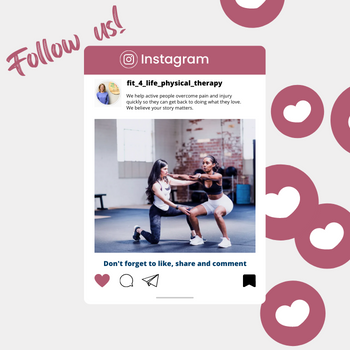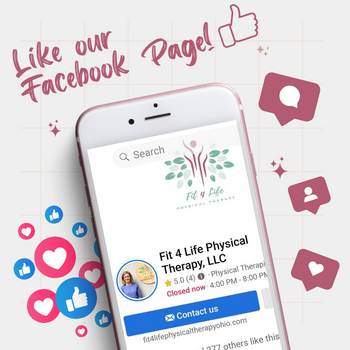In March, Raven Anspach, DPT shared her expertise with regards to knee pain with our community at our first ever live event here at Fit 4 Life. The following post is an outline of her presentation as well as the recording of the event. Participants of the class were eligible for a lower body diagnostic. If you’re interested in taking advantage of this opportunity, comment below and we will send you your copy of Raven’s Tips for Healthy Knees PDF. Then call the office today for your lower body diagnostic. Don’t let your nagging knee pain keep you from living your best active life any longer. Call 440-340-371 today.
Tonight’s Outline:
- Basic knee anatomy:
- What is IN it (2 menisci & 2 major ligaments)
- What is AROUND it (2 other major ligaments + quads, hamstrings, calves, and other smaller muscles)
- Open kinetic movements (Tibia moving on the Femur) vs. Closed kinetic movements (Femur moving on the Tibia)
- What is on the outside can HELP compensate for problems on the inside, but what is on the inside CANNOT replace stability achieved with the outside…ultimately you need BOTH!
- Common movements (or moments) that cause damage to the knee:
- Twisting
- Hyperextension
- Direct blow (i.e. dashboard injury)
- Natural wear and tear
- Common injuries/ailments/sources of knee pain:
- Ligament sprain/tear (acute or chronic)
- Meniscus tear (acute or chronic)
- Tendinopathy (acute)
- Fracture (acute)
- Patellar grinding (chronic)
- OA (chronic)
- Childhood ailments (chronic, i.e. Osgood Schlatter’s)
- Tips to PREVENT injury and PROMOTE knee health:
- 1.) Strengthen your hamstrings!
- Weak hamstrings and strong quads creates an imbalance at the knee that compromises the mechanics.
- 2.) Keep your knees apart when you squat down.
- Allowing the knees to fall together, or touch, when performing a squat places an unnecessary stress on the medial knee ligaments.
- 3.) Strengthen your lateral hip
- #1 reason the knees tend to fall together during a squat, running, landing, etc.
- 4.) Avoid twisting over a single leg.
- Especially when the heel is down.
- Creates a shearing force on the menisci that can cause tears.
- 5.) Do exercises in both weight-bearing AND non weight-bearing.
- These are two different mechanical movements at the knee, and both need work in order to produce optimal strength and help.
- 1.) Strengthen your hamstrings!
- PRO TIPS:
- 1.) Get yourself a shock absorbing shoe (especially if you already have knee pain, have a meniscus injury, or have had one in the past)
- 2.) ICE at the FIRST SIGN of swelling
- Even a small increase in fluid causes inhibition of the quads
Comments or questions welcome.






